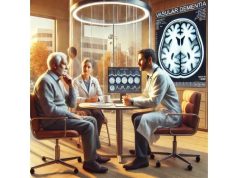
What is dysthymic disorder?
Dysthymic Disorder, also known as Persistent Depressive Disorder (PDD), is a type of depression that lasts at least two years and impairs a person’s mood, energy levels, and overall quality of life. While dysthymia’s symptoms are usually less severe than those of major depressive disorder (MDD), it is distinguished by a persistent, pervasive sense of sadness or low mood. Individuals with dysthymia may have low self-esteem, feelings of hopelessness, fatigue, and difficulty focusing. Unlike major depressive episodes, which occur in cycles, dysthymia casts a more persistent cloud over daily life, making it difficult for people to feel joy or satisfaction even in good circumstances.
Dysthymic Disorder typically begins in adolescence or early adulthood, but many people do not seek treatment for years, blaming their symptoms on stress or personal shortcomings rather than a treatable condition. Its chronic nature can cause functional impairments such as difficulties at work, in relationships, and with physical health. The disorder is frequently associated with other conditions, such as anxiety disorders or substance abuse, complicating diagnosis and treatment. While dysthymia has traditionally been regarded as difficult to treat, recent advances in medical research and technology provide new hope for long-term relief and recovery.
Traditional Treatments for Dysthymic Disorder
Historically, the treatment of dysthymic disorder has included psychotherapy, pharmacotherapy, and lifestyle changes. Each approach focuses on the disorder’s chronic, low-grade depressive symptoms, allowing people to regain control of their mood and daily functioning.
1. Psychotherapy
Psychotherapy remains the primary treatment for dysthymic disorder, with Cognitive Behavioral Therapy (CBT) being the most commonly used modality. CBT is intended to help people recognize and change the negative thought patterns and behaviors that contribute to their persistent low mood. Patients learn coping strategies, problem-solving skills, and more balanced thinking patterns during structured sessions with a licensed therapist. This method not only alleviates symptoms, but it also provides patients with tools to avoid future depressive episodes.
Another psychotherapy approach commonly used in dysthymia is Interpersonal Therapy (IPT), which focuses on improving an individual’s relationships and social functioning. IPT investigates the link between depression and personal relationships, assisting patients in navigating conflicts, social isolation, and role transitions that may worsen their symptoms. Individuals who address these interpersonal challenges can improve their mood and emotional well-being.
Psychodynamic therapy takes a different approach, delving into the unconscious causes of dysthymic symptoms. This longer-term therapy aims to uncover and resolve underlying emotional conflicts and unresolved issues from childhood or previous relationships. Psychodynamic therapy, while not as common as CBT or IPT, can be beneficial for people with dysthymia caused by complex emotional experiences.
2. Pharmacotherapy
Pharmacological treatment is another essential component of dysthymia management. The goal of medication is to treat the underlying neurochemical imbalances that cause depression, particularly those involving serotonin and norepinephrine.
Selective Serotonin Reuptake Inhibitors (SSRIs), including fluoxetine (Prozac), sertraline (Zoloft), and citalopram (Celexa), are frequently used as the first-line treatment for dysthymic disorder. These medications boost serotonin levels in the brain, which helps to improve mood, energy, and emotional stability. SSRIs are generally well tolerated, though they can take several weeks to show results.
Individuals who do not respond adequately to SSRIs may consider Serotonin-Norepinephrine Reuptake Inhibitors (SNRIs), such as venlafaxine (Effexor) or duloxetine (Cymbalta). SNRIs target serotonin and norepinephrine, two neurotransmitters involved in mood regulation. By increasing the availability of these chemicals, SNRIs can help alleviate the persistent low mood, fatigue, and concentration problems associated with dysthymia.
For treatment-resistant dysthymia, tricyclic antidepressants (TCAs) or monoamine oxidase inhibitors (MAOIs) can be used. These older classes of antidepressants are generally more effective in severe cases, but their side effects, such as weight gain, dizziness, or dry mouth, make them unsuitable for long-term use. Nonetheless, for people who haven’t found relief from other medications, TCAs and MAOIs can provide significant symptom relief.
3. Lifestyle Changes and Behavioral Interventions
Aside from medication and therapy, lifestyle changes are frequently recommended to treat dysthymic disorder. Regular exercise, such as aerobics or yoga, has been shown to alleviate depressive symptoms by increasing endorphin release and improving overall physical health. Exercise also improves sleep, which is an important factor in managing depression because poor sleep can exacerbate mood disturbances and fatigue.
Mindfulness-based therapies have gained popularity in recent years as a supplement to traditional treatment. These interventions help people focus on the present moment and develop a nonjudgmental awareness of their thoughts and feelings. Mindfulness meditation, for example, can help reduce stress, improve emotional regulation, and prevent rumination, which frequently exacerbates depressive symptoms in dysthymia.
Dietary changes can also play an important role in mood regulation. Diets high in omega-3 fatty acids, antioxidants, and whole grains have been linked to improved mental health. In contrast, highly processed foods, excessive sugar, and alcohol can worsen mood swings and contribute to depressive symptoms.
4. Challenges of Traditional Treatment
Despite the availability of effective treatments, dysthymic disorder is still difficult to treat for many people. Because the condition is chronic, it frequently necessitates long-term management, and some people may not achieve full remission even with the most effective treatments available. Many patients report only partial relief from symptoms rather than complete recovery, which leads to frustration and difficulty with medication adherence.
Furthermore, because dysthymia is frequently underdiagnosed, many people go untreated for years, causing symptoms to worsen and become more resistant to treatment. This has prompted ongoing research into novel treatments that can provide more comprehensive relief from the symptoms of chronic depression.
Groundbreaking Innovations in Dysthymic Disorder Treatment
Recent advances in medical research have resulted in a number of novel treatments for dysthymic disorder, providing new hope for those who have not responded well to traditional methods. These advancements include novel pharmacological agents, neuromodulation techniques, and cutting-edge therapies that are changing the way mental health professionals treat chronic depression.
1. Esketamine and Ketamine Treatment
One of the most important advances in depression treatment in recent years has been the introduction of esketamine, a nasal spray derived from the anesthetic ketamine. In 2019, the United States. The Food and Drug Administration (FDA) approved esketamine for treatment-resistant depression, and it has since been investigated as a possible treatment for persistent depressive disorders such as dysthymia. Unlike traditional antidepressants, which can take weeks to work, esketamine provides quick relief from depressive symptoms, often within hours.
Esketamine targets the brain’s NMDA receptors, which are involved in synaptic plasticity—the brain’s ability to adapt and form new connections. This is a novel mechanism compared to SSRIs and SNRIs, which target neurotransmitters such as serotonin. Esketamine’s ability to induce neuroplasticity makes it especially promising for people who have long-standing depressive symptoms that have not responded to other treatments.
Intravenous ketamine is another treatment option that has gained popularity due to its rapid effects. Ketamine infusion therapy, administered in a controlled medical setting, is being used to treat patients with severe depression and dysthymic disorder, providing a potential lifeline for those who have not found relief from traditional therapies.
2. transcranial magnetic stimulation (TMS)
Transcranial Magnetic Stimulation (TMS) has emerged as a non-invasive neuromodulation technique with promising results for treating chronic depression, including dysthymic disorder. TMS works by sending magnetic pulses to specific parts of the brain that control mood, such as the prefrontal cortex. These pulses stimulate neural activity, which can help alleviate depressive symptoms.
TMS is usually administered over a few weeks, with patients receiving daily sessions. Unlike medication, which affects the entire brain, TMS focuses on specific regions involved in mood regulation, potentially reducing side effects and providing a more targeted approach. Clinical trials have shown that TMS can be effective for people who have not responded to antidepressants, making it a viable treatment option for treatment-resistant dysthymia.
3. Psychedelic-assisted therapy
Psychedelic substances, such as psilocybin, the active compound found in magic mushrooms, are gaining popularity in clinical research due to their potential for treating chronic depression. Psilocybin-assisted therapy entails administering a controlled dose of the psychedelic in a therapeutic setting, typically in conjunction with talk therapy. During the session, patients may experience a variety of emotional and perceptual changes that can provide new insights into their depression.
Studies have shown that psilocybin can help “reset” the brain’s default mode network, which is frequently overactive in people suffering from depression. This reset can result in long-term improvements in mood and emotional processing, even after just one session. While still in the experimental stage, psilocybin-assisted therapy shows promise for dysthymic disorder patients who have not responded to conventional treatments.
4. Digital Therapeutics and AI-Assisted Interventions.
In recent years, digital therapeutics have emerged as an innovative tool for managing dysthymic disorder and other mental health conditions. These interventions include mobile apps and online platforms that offer structured therapy sessions, mood tracking, and self-directed behavioral health interventions. Many of these platforms are built on Cognitive Behavioral Therapy (CBT) principles, with interactive exercises to help people reframe negative thoughts and manage their depressive symptoms.
One of the primary advantages of digital therapeutics is their accessibility. Patients can complete therapy at their own pace, outside of traditional clinical settings, and incorporate these tools into their daily lives. This flexibility can be especially beneficial for people with dysthymic disorder, who may find it difficult to commit to regular therapy appointments in the long run. Digital therapeutics also provide useful data on mood patterns and treatment responses, which can be shared with healthcare providers to improve patient care.
AI-assisted interventions are another frontier in digital mental health care. These platforms use machine learning algorithms to tailor treatment plans based on individual symptoms, preferences, and progression. By analyzing large datasets from users, AI can recommend the most effective interventions and provide real-time feedback to assist patients in staying on track. AI-powered platforms may even detect early signs of treatment resistance or worsening symptoms, allowing for timely changes to care plans.
5. Genetic and biomarker research
Genetics and biomarker research is paving the way for more personalized treatment of dysthymic disorders. Researchers are identifying genetic markers and biological indicators associated with mood regulation in order to develop more targeted therapies that are tailored to each individual’s unique biological profile.
For example, genetic variations in how patients metabolize certain medications, such as SSRIs or SNRIs, can have an impact on their treatment outcomes. By performing pharmacogenetic testing, healthcare providers can personalize medication regimens based on a patient’s genetic makeup, potentially increasing treatment efficacy while reducing side effects. Individuals with treatment-resistant dysthymia may benefit the most from this personalized approach, as they may require more tailored interventions.
Biomarkers, such as specific proteins or hormonal levels in the blood, are being investigated as potential diagnostic tools for dysthymia and treatment progression. While this field of study is still in its early stages, identifying reliable biomarkers could transform how dysthymic disorders are diagnosed and treated, allowing for earlier interventions and more precise therapeutic targeting.
Holistic and Alternative Therapies for Dysthymic Disorder
In addition to pharmacological and technological advances, there is an increasing interest in holistic and alternative treatments for dysthymic disorder. These approaches emphasize the integration of mind, body, and spirit, treating the entire person rather than just the symptoms of depression. Many of these alternative treatments have been shown to improve mood and overall well-being, despite being commonly used as complementary therapies.
1. Nutritional Psychiatry
Nutritional psychiatry is a developing field that investigates the link between diet and mental health. According to research, certain nutrients, such as omega-3 fatty acids, B vitamins, and magnesium, are important for brain function and mood regulation. Diets high in fruits, vegetables, whole grains, and lean proteins have been associated with a lower risk of depression, whereas diets high in processed foods, sugars, and unhealthy fats have been linked to an increased risk of mood disorders.
For people with dysthymic disorder, increasing their dietary intake of mood-boosting nutrients may help alleviate some depressive symptoms. Consuming omega-3-rich foods, such as fatty fish, as well as antioxidants from fruits and vegetables, can help to improve brain health. Furthermore, limiting inflammatory foods like refined sugars and processed snacks may improve mood stability over time.
2. Mindfulness & Meditation
Mindfulness-based therapies, such as meditation and mindfulness-based stress reduction (MBSR), are increasingly popular as effective treatments for chronic depression. These techniques entail focusing on the present moment and developing a nonjudgmental awareness of thoughts, emotions, and bodily sensations. Individuals who practice mindfulness on a regular basis can learn to break free from rumination, a common symptom of dysthymia, and develop healthier emotional responses to stress.
Meditation, in particular, has been shown to alleviate the physiological and psychological effects of stress, resulting in improved mood, emotional regulation, and overall well-being. Mindfulness practices can be incorporated into daily routines, providing individuals with dysthymic disorder with accessible tools for symptom management and stress reduction.
3. Yoga and Physical Exercise
Regular physical activity, such as yoga and aerobic exercise, has long been regarded as a natural antidepressant. Exercise increases the release of endorphins, which are brain chemicals that improve mood and reduce stress. Regular exercise can help people with dysthymic disorder improve their energy levels, reduce fatigue, and alleviate the disorder’s chronic low mood.
Yoga, which combines physical movement, mindfulness, and breath control, provides additional mental health benefits. According to research, yoga can help with depression and anxiety symptoms, improve sleep quality, and increase emotional resilience. Yoga’s gentle, meditative nature makes it an excellent complement to traditional dysthymia treatments, offering both physical and emotional benefits.
4. Acupuncture and Traditional Chinese Medicine(TCM)
Acupuncture, an important component of Traditional Chinese Medicine (TCM), has been studied as an alternative treatment for mood disorders, including dysthymia. This practice entails inserting thin needles into specific points on the body to stimulate the flow of energy, or “Qi,” which promotes healing. Some studies have suggested that acupuncture can help regulate neurotransmitters involved in mood regulation, such as serotonin and dopamine.
Although there is limited scientific evidence to support acupuncture for depression, many patients report subjective improvements in their mood, energy levels, and overall sense of well-being following treatment. Acupuncture is frequently used as a complementary therapy alongside more conventional treatments, and its holistic approach is consistent with the larger goals of mental and emotional balance in the treatment of chronic depression.
5. Herbal supplements and natural remedies.
Herbal supplements, including St. John’s Wort, saffron, and ashwagandha, have been used for centuries to alleviate depression and anxiety. While these remedies are not a substitute for professional medical care, some research suggests that certain herbs may help alleviate mild to moderate depressive symptoms by modulating neurotransmitter activity or reducing inflammation in the brain.
St. John’s Wort, in particular, has been studied for its antidepressant properties, but it should be used with caution due to potential interactions with other medications, particularly SSRIs. Ashwagandha, an adaptogenic herb used in Ayurvedic medicine, is thought to reduce stress and improve emotional balance. Herbal supplements, when used as directed by a healthcare provider, can supplement traditional treatments for dysthymic disorder and improve overall mental health.










